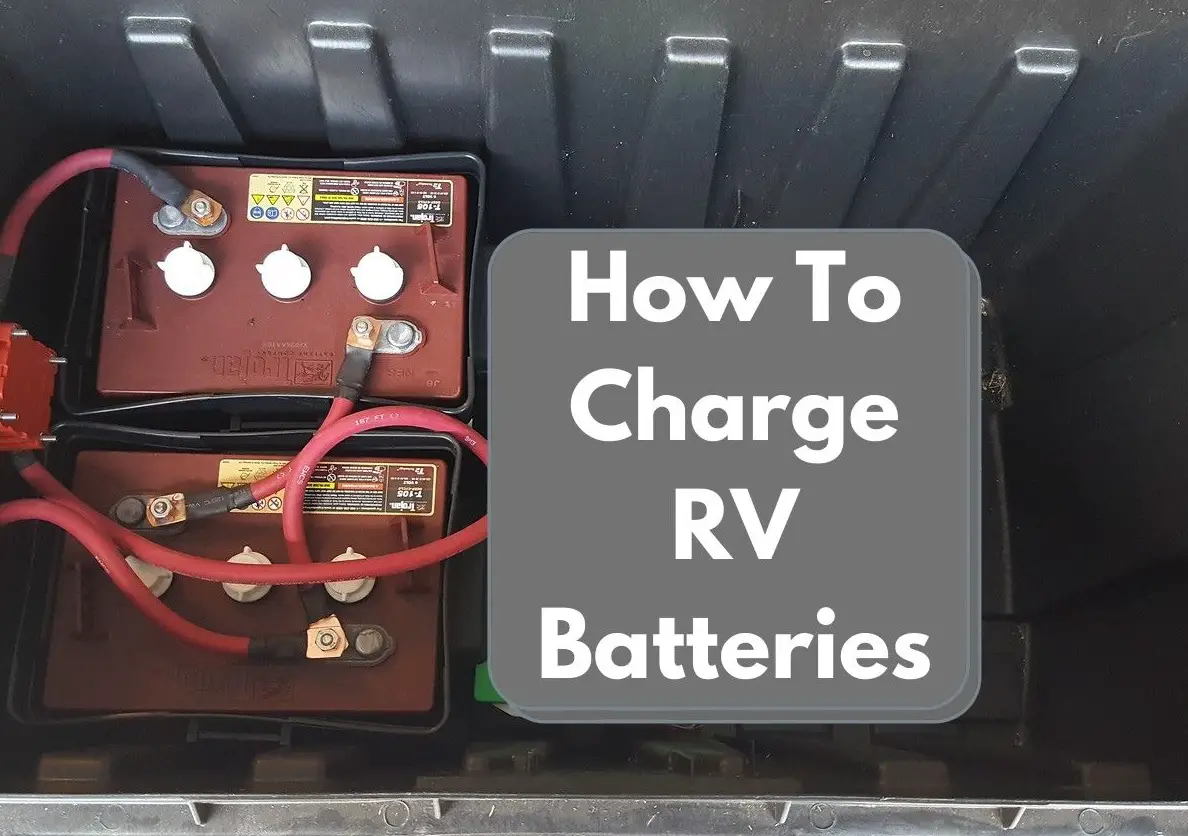If you are new to RVing or are looking to get your rig out for a new season or will be going on extended trips, knowing how to charge RV batteries is going to be of critical importance to making sure your trip goes well.
There’s four main ways of how to charge RV batteries: through your RV’s converter, through a vehicle’s alternator, by solar power, or by wind power.
Each has their benefits and specific setup, which we’ll cover further in this guide.
How To Charge RV Batteries
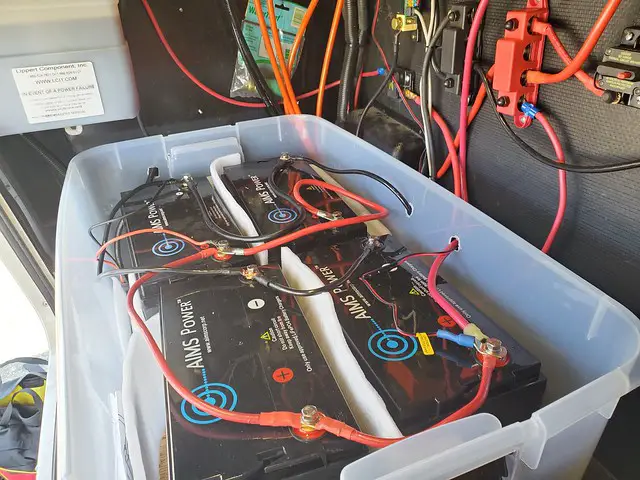
As we covered earlier, you can charge your RV batteries through a converter, through the alternator of your tow vehicle, or through solar or wind power.
As a general rule, always charge RV batteries using the following steps:
- Start by connecting the red (or positive) terminal of the RV battery that needs to be charged
- Attach the red (or positive) terminal of the power source (such as a battery charger, generator, or tow vehicle’s battery)
- Attach the black (or negative) terminal of the RV battery being charged
- Attach the black (or negative) terminal of the power source
- After charging is complete, remove the cables in the order you attached them.
Let’s walk through how to charge your RV battery using each method.
How To Charge RV Batteries While Plugged In
You may be plugged into the electrical grid of an RV campsite or RV park (also known as shore power), or you may be plugging in your RV to your home’s electrical outlet. Each one is a little different:
How To Charge RV Batteries On Shore Power
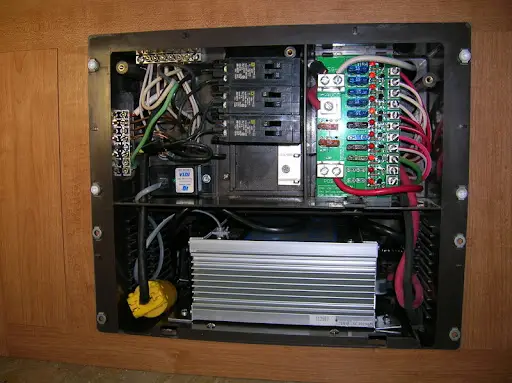
Depending on the size of your RV you will have either a 30-amp or 50-amp hookup, which you connect to shore power, or the plugin on an RV campsite.
You should not disconnect your RV battery while plugged in to shore power, as this electrical connection will charge your RV batteries while also powering your RV’s electrical components.
When plugged into shore power, your RV’s converter is literally converting the power from AC power to DC which is the type that your batteries supply and the type of power that your RV uses.
An RV converter will work without a battery, but it is not recommended.
Read more: what does an RV converter do?
How To Charge RV Batteries Using Residential Power
You can plug in your RV to your home power using an extension cord, which will supply power to the RV converter through the 15-amp or 20-amp residential electric source in your home.
Note that this will take longer to charge your RV batteries through the converter because there’s not as much power coming through (15 or 20 amps at home versus 30 to 50 amps via shore power).
Alternatively, you can plug a 12-volt battery charger right into the wall in your home or garage and hook up your RV battery to it, but this requires removing the RV battery which can be a little more work, so most folks prefer to simply plug the RV in and let the converter do the job.
How To Charge RV Battery From Another Vehicle
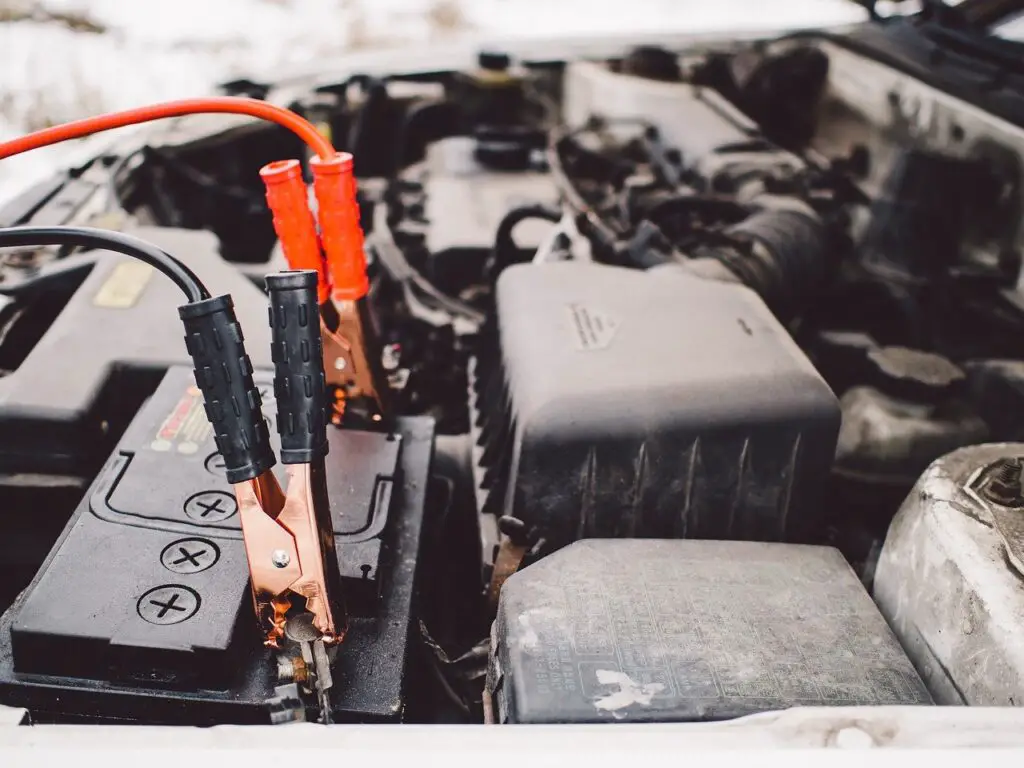
You can use your tow vehicle’s alternator to charge your RV battery if necessary.
This works the same way as charging another car’s battery by hooking up the power source vehicle and your RV battery via jumper cables, then simply letting the alternator slowly charge the battery as the vehicle idles.
This is not the quickest or most efficient method, but it will get the job done in a pinch.
How To Charge RV Battery With Solar Power
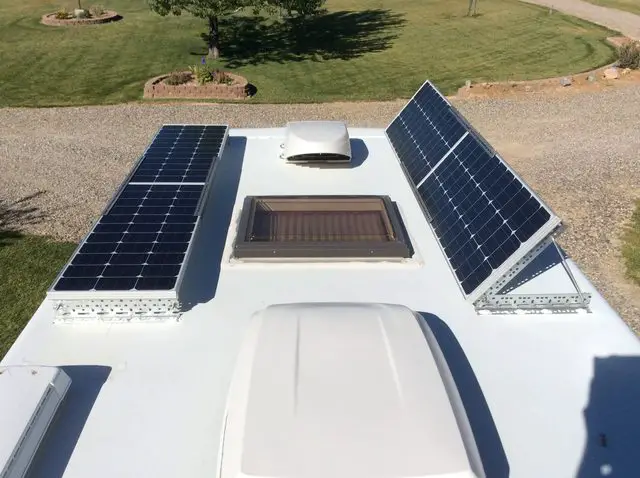
More RVers are embracing solar power as the cost of solar panels comes down and the technology improves.
To charge your RV battery with solar power, you’ll need a solar panel which connects to an amp controller or charge controller, then connects to your RV battery.
The main drawbacks of charging your RV battery with solar are the expense and setup of the system and the fact that you may only get about 6-7 hours of direct sunlight that will power the solar panel daily.
How To Charge RV Battery Using Wind Power
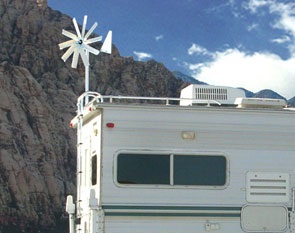
If you have a semi-permanent situation with your RV and live in a windy area, you can consider using a wind turbine to act as a power source for powering your RV or charging your RV battery.
It’s essentially the same setup as using solar power, with the exception of the main power source being the wind turbine rather than the solar panel.
While wind power is potentially available 24/7 unlike solar power, you still have sizable startup costs, less portability, and the inconsistency of the wind to deal with if considering using wind power.
How To Charge RV Battery While Driving
There are three different ways of how to charge your RV battery while driving: using the 7-pin trailer connection on your tow vehicle (if towing your RV), by naturally charging the RV batteries using the RV’s alternator (if your RV has it’s own engine), or by using a DC to DC charger (which requires installation).
Each method has its own benefits and drawbacks.
How To Charge RV Battery With A Generator
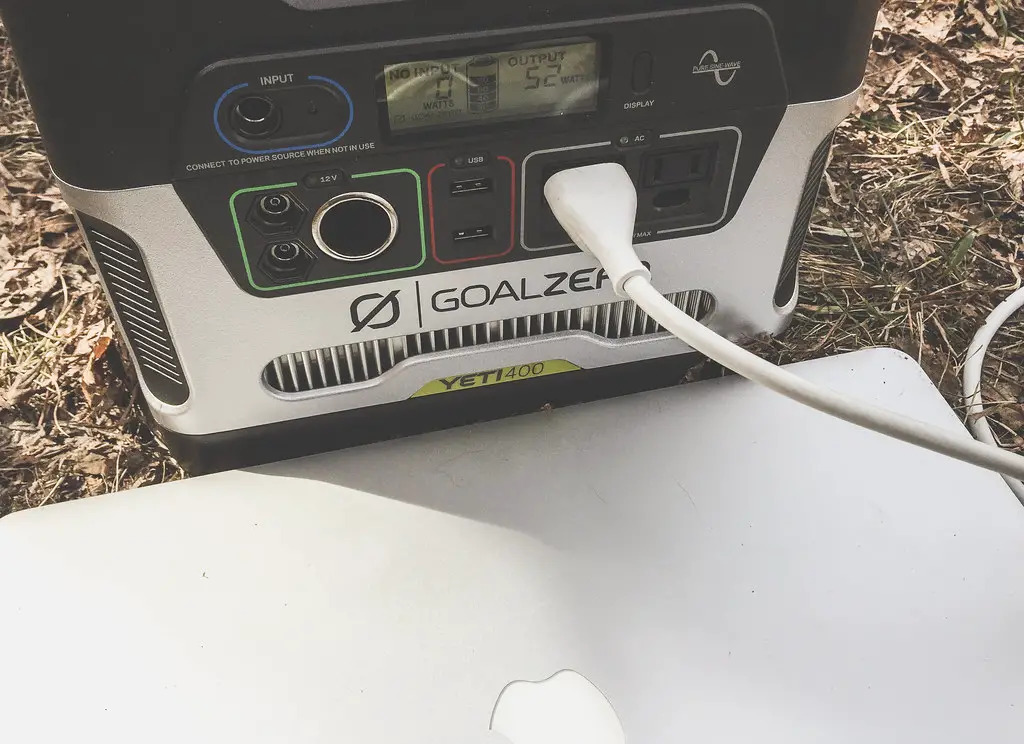
You can use a gas, propane, or diesel generator to charge your RV battery if needed.
Simply plug in your RV to an AC outlet on the generator and charge your RV battery through the converter the same way you would if you were plugged into an electrical outlet through an extension cord at home.
Alternatively, you could plug in a 12-volt battery charger to the generator and charge your RV’s battery directly from it, bypassing the RV’s converter and allowing you to focus only on charging the battery itself.
Can I Charge My RV Batteries From Multiple Sources?
Yes, you can utilize several different power sources to charge your RV batteries at the same time.
You’ll want to use a battery tender or use an RV converter with a built-in battery tender when possible to avoid damage to your RV battery if charging with multiple power sources.
What’s The Best Way To Charge RV Batteries?
The easiest and safest way to charge your RV batteries is by letting them charge naturally via the RV power converter while you’re plugged in to shore power.
Can I Overcharge My RV Battery?
Yes, you can absolutely overcharge an RV battery, which can damage the battery and shorten its lifespan.
In some cases, overcharging a battery can cause the seals to fail on the battery casing, which can cause dangerous and harmful battery acid to overflow onto the components surrounding your battery, leading to additional problems.
Using a battery tender will avoid overcharging of your RV batteries.
Will Discharging An RV Battery Too Far Ruin The Battery?
Yes, running a battery too far down past the manufacturer’s suggestions can reduce their lifespan and make them less reliable.
Always refer to the manufacturer’s specifications and keep your RV batteries charged properly to ensure a long life and good operation.
Charging Lithium RV Batteries Vs. Lead-Acid RV Batteries
There are two main types of RV batteries, and each has their own nuances you must be aware of when charging them:
- Lithium RV Batteries can be bulk-charged up to 100% and can continuously accept higher charge currents that can charge the battery much faster, as they never enter an absorption stage.
This allows lithium RV batteries to be charged in only a few hours.
Lithium batteries are also more efficient and are able to consistently perform at all levels of charge.
- Lead-Acid RV Batteries (such as the Roadhawk Predator RV battery) can be bulk-charged up to 80%, then must be finished charging through absorption mode from 80-95% charge, then topped of from 95-100% through float charging (a method where the capacity is maintained without overcharging).
Lead-acid RV batteries take a longer time to charge than lithium RV batteries due to this method.
Lead-acid batteries do not perform as well at lower charges.
How Long Does It Take To Charge An RV Battery?
How long it takes for an RV battery to charge depends a lot on the power source and the battery itself, but here are a few general guidelines to go by:
- Charging an RV battery through an RV converter will take at least 10 hours.
- Charging an RV battery through a generator can take between 10 and 24 hours.
- Charging an RV battery through another vehicle’s alternator can take between 8 and 12 hours.
How To Charge RV Batteries: Wrapping Things Up
As we covered in today’s guide, there are several ways to charge RV batteries depending on your situation and what resources you have available to you, and you certainly can charge your RV batteries from multiple sources at the same time, so you should never have a situation where you’re dealing with a dead RV battery.
What RV battery charging method do you use most often, and what are your thoughts on it’s efficiency? Let us know in the comments below.

